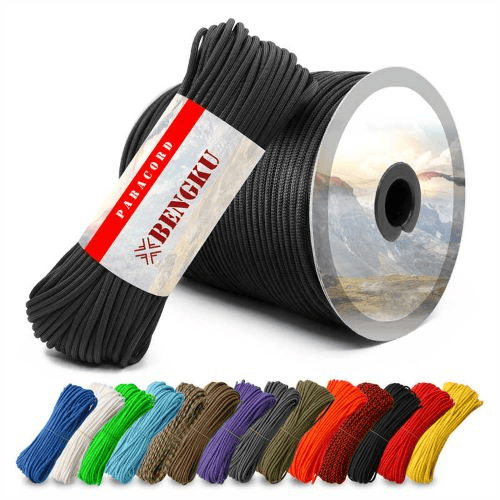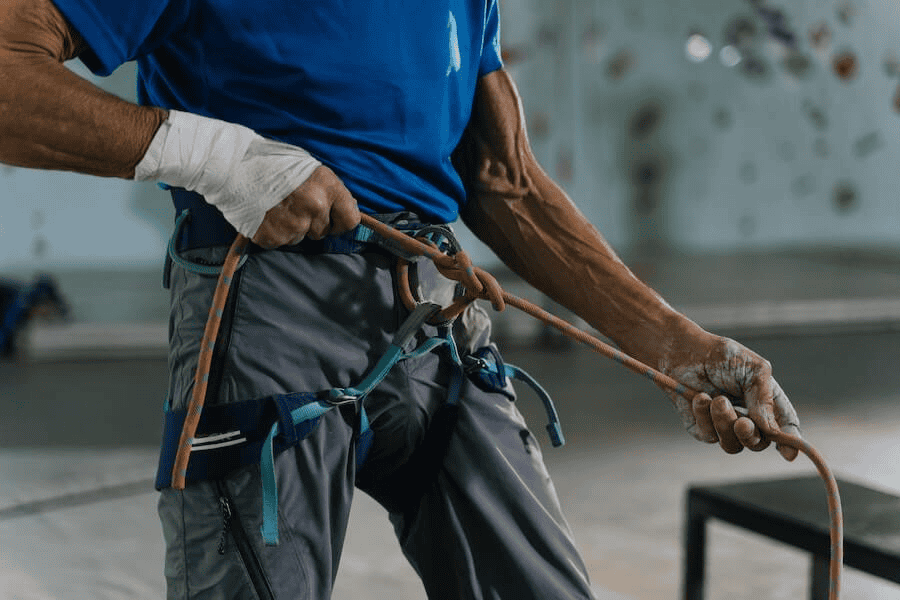
If you’re an outdoor enthusiast or a survivalist, you’ve probably heard of or used paracord. But a burning question often arises: how much weight can it truly bear? In this detailed guide, we delve deep into the weight-bearing capacities of various paracord types.
Paracord, depending on its type, can hold weights ranging from 95 lbs to 750 lbs. Paracord 550, for example, is rated to hold up to 550 lbs without breaking.
But how do different types of paracord compare, and what does this mean for their applications? Let’s unravel the mystery.
The Strength of Different Paracord Types
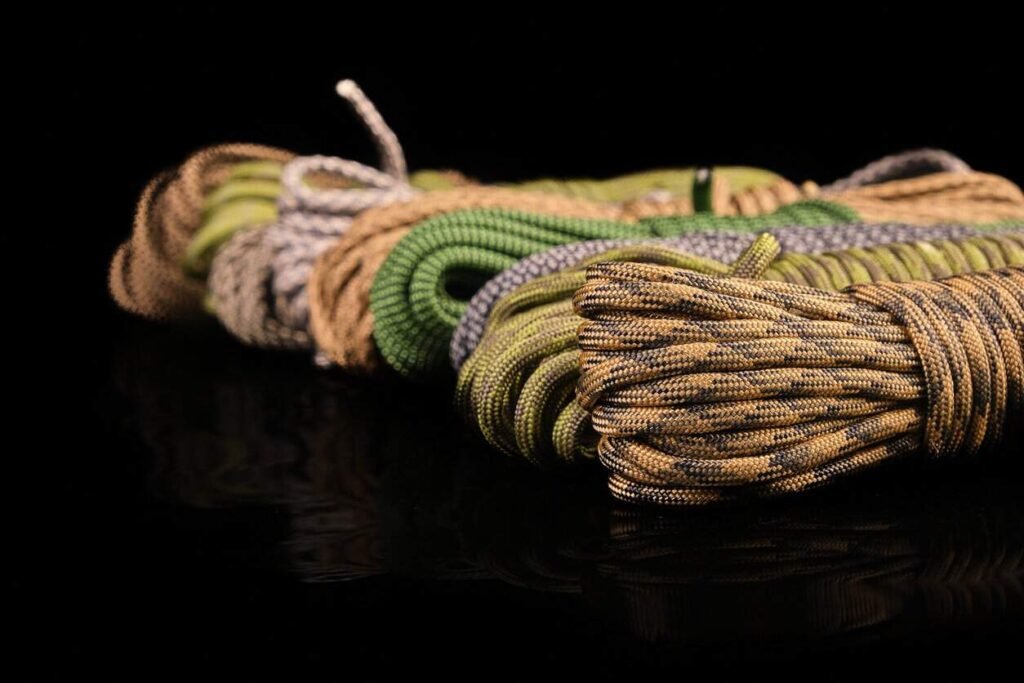
Paracord 550 (Type III)
- Weight Capacity: 550 lbs
- Construction: Paracord 550, also known as Type III, consists of a multi-strand, nylon core encased in a woven exterior. Typically, it features 7-9 inner yarns, which significantly contribute to its strength.
- Applications: Due to its impressive tensile strength, it’s commonly used in survival situations:
- Building sturdy shelters or trip wires.
- Crafting improvised fishing lines or snares.
- Used as bootlaces or for bundling items together.
- Serving as a tourniquet in emergency scenarios.
- Fun Fact: Its name originates from its original use as suspension lines for parachutes during WWII.
Paracord 750 (Type IV)
- Weight Capacity: 750 lbs
- Construction: The Paracord 750 or Type IV is an enhanced version of the 550, boasting 11 inner yarns. This added density makes it the stronger sibling in the paracord family.
- Applications: Due to its bolstered strength, it’s ideal for:
- Pulling or lifting heavy objects.
- Crafting robust pulley systems in survival scenarios.
- Making heavier-duty slings or belts.
- Fun Fact: Its robustness often positions it as a favorite for outdoor tasks requiring just a bit more strength and reliability.
Paracord Nylon vs. Paracord MIL-C-5040H
- Material Comparison: Both varieties are predominantly made of nylon, a material known for its elasticity, strength, and resistance to UV and rot. However, the MIL-C-5040H is a military-grade variant, undergoing more stringent testing and specifications.
- Strength Dynamics: While the exact tensile strength can vary based on construction, MIL-C-5040H typically ensures more prolonged stress resistance and might bear slightly more weight than its commercial counterparts, depending on the type.
- Applications: While both can be used interchangeably for many general tasks, the MIL-C-5040H’s superior quality makes it a preferred choice for life-dependent situations like survival, rescue, or military operations.
- Unique Identification: Authentic MIL-C-5040H paracord has identifiable color-coded yarns inside, marking it distinct from commercial-grade cords.
Factors Affecting Paracord Strength
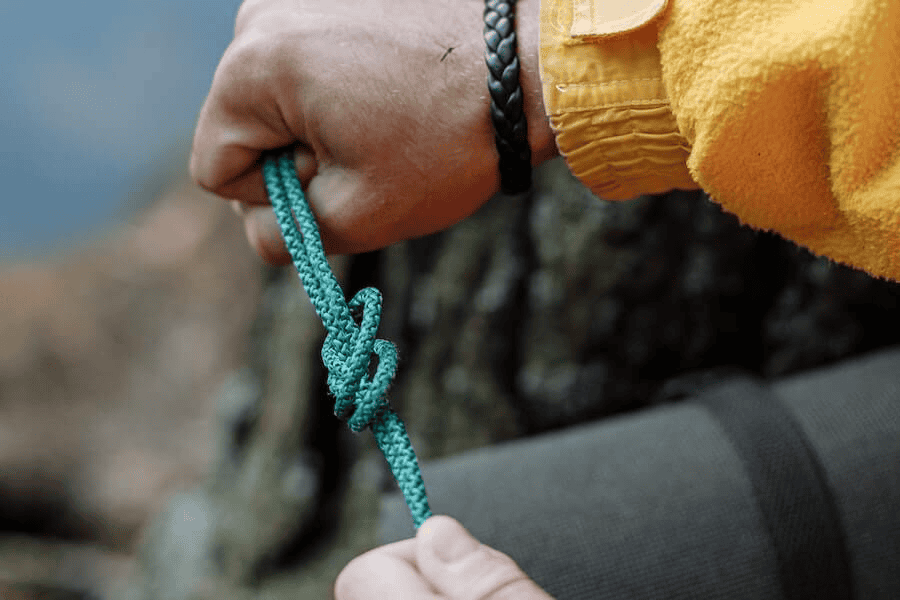
Understanding the strength of paracord isn’t just a matter of numbers and types. It’s about appreciating its practicality in real-world scenarios. Let’s unpack some of the everyday uses and critical moments where the strength of paracord truly shines.
Everyday Practicality
- Camping & Hiking: Whether it’s creating a clothesline, hoisting food away from wildlife, or even constructing makeshift tents, paracord’s strength and durability make it indispensable to outdoor enthusiasts. The peace of mind knowing that a Type IV can hold up to 750 lbs means that you can hang heavier equipment or even a hammock without worry.
- Boating & Fishing: Paracord’s resistance to rot and UV radiation, combined with its strength, makes it a favorite for boaters. From tying down equipment to acting as an improvised fishing line, its tensile strength ensures security even in wet conditions.
- Home & Garden: Believe it or not, paracord has found its way into many households. Be it for crafting durable clotheslines, tying plants, or even making DIY crafts and bracelets – its strength ensures longevity and sturdiness.
Critical Situations
- Search & Rescue: In life-threatening situations, the strength of the paracord can quite literally be a lifesaver. Its ability to bear weight makes it ideal for creating pulley systems for rescues, or as an emergency rappelling rope.
- Survival: Beyond the more typical uses in survival situations, like making traps or shelters, the strength of paracord can also come into play in emergencies where someone might need to be dragged to safety or when devising a way to cross treacherous terrains.
- Military Uses: The origins of paracord trace back to the military, and even today, its strength is crucial in operations. From rigging equipment to emergency medical applications, paracord has proven invaluable time and time again.
Factors Affecting Paracord Strength
- Wear & Tear: While paracord is robust, repeated use, exposure to harsh conditions, or abrasions can reduce its weight-bearing capacity. It’s always essential to inspect your paracord for signs of damage before critical applications.
- Knots & Bends: Every knot or bend in a paracord can decrease its strength. Thus, while it’s versatile, it’s crucial to understand that its weight-bearing capacity may decrease with more complex configurations.
Common Myths Debunked
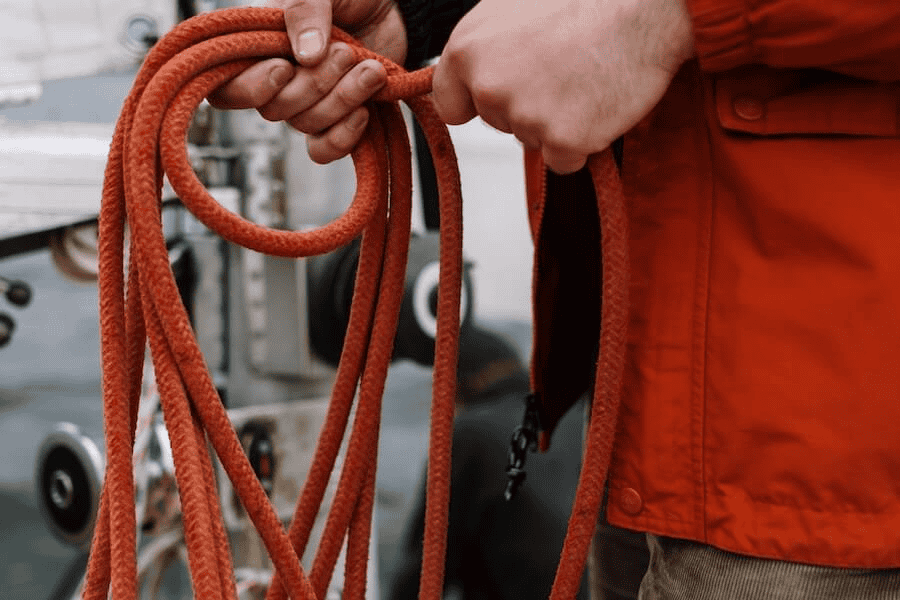
Proper maintenance, usage, and awareness of the factors affecting the strength of paracord are vital for maximizing its potential. This section delves deeper into how you can ensure that your paracord remains as strong as the day you bought it.
Proper Storage
Storing your paracord correctly is essential for maintaining its strength:
- Away from Sunlight: Prolonged exposure to direct sunlight can degrade the fibers of your paracord. It’s best to store it in a cool, dark place.
- Dry Conditions: While paracord is resistant to rot and mildew, it’s always a good idea to store it dry. Wet storage can affect its elasticity and strength over time.
Knotting & Its Effects
While paracord is incredibly versatile for a variety of knots, each knot can impact its strength. The more acute the bend, the more strength is compromised.
- Watch this knotting tutorial to understand the dynamics of knotting and its effect on paracord strength: Knotting and Paracord Strength Video.
Regular Inspection
Regularly inspecting your paracord can help you identify signs of wear and tear, potential weak points, and areas that might need repair or replacement:
- Look for Abrasions: Friction can cause wear on your paracord, reducing its strength.
- Check for Discoloration: This can indicate prolonged exposure to sunlight or chemical damage.
Practical Testing
Periodically testing the strength of your paracord in a controlled environment can provide insight into its current weight-bearing capacity:
- Weight Test: Using a secure setup, gradually add weight to your paracord to ensure it still holds up to its rated strength.
- For a practical demonstration on weight testing, view this informative video: Paracord Weight Test Video.
Proper Usage
Paracord can handle a lot, but it’s crucial to avoid unnecessary stress:
- Avoid Sharp Edges: When using paracord to tie or secure items, ensure it’s not rubbing against sharp or abrasive surfaces.
- Understand Weight Limits: Never exceed the weight limit of your specific paracord type. For a deeper understanding of its applications, refer to our article on What is a Paracord Used For?
How to Determine Authenticity and Quality
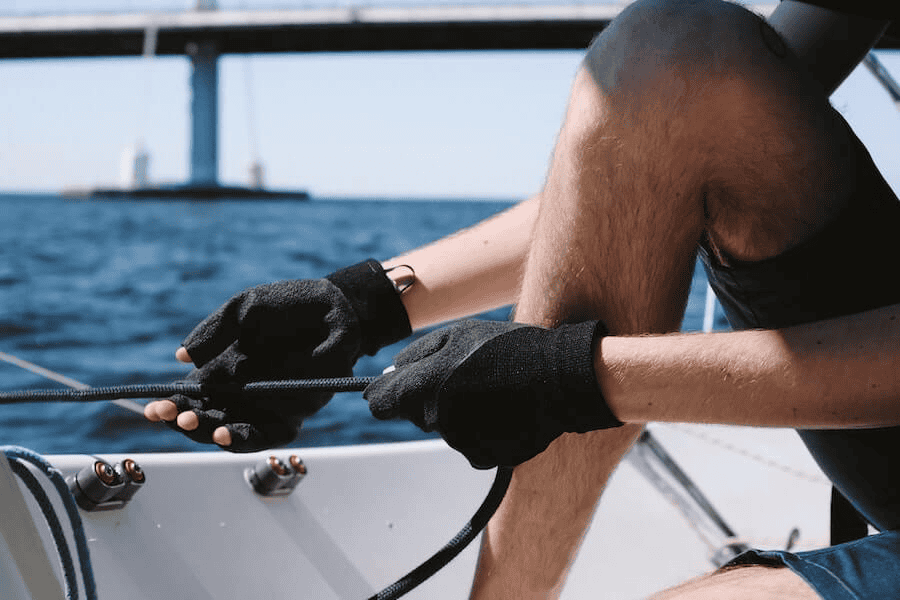
Understanding the practical applications of paracord is crucial, especially when it comes to safety. By recognizing its capabilities and limitations, you can harness its strength in numerous ways without risking the integrity of the cord or your well-being.
Outdoor Adventures
Paracord’s resilience makes it the go-to choice for outdoor enthusiasts:
- Camping: Use paracord for tent guy lines, bear bag hanging, or even crafting a makeshift hammock.
- Hiking: It can serve as a lifeline, help secure belongings, or even aid in emergency situations like splinting a broken limb.
- Learn more about paracord applications in camping and hiking: Paracord Outdoor Uses Video.
Survival Situations
In survival scenarios, the strength of paracord can be lifesaving:
- Snares and Traps: Craft snares to catch small game, ensuring food in dire situations.
- Fishing: Inner strands can serve as makeshift fishing lines.
- Building Shelters: Paracord can help lash together branches or other materials.
- Explore survival techniques involving paracord in this video: Paracord Survival Hacks Video.
Crafting and DIY
Beyond survival, paracord’s strength makes it ideal for crafting:
- Bracelets and Lanyards: Create functional fashion with paracord bracelets, which can be unraveled in emergencies.
- Handles and Grips: Wrap tools or handles for an enhanced grip.
- Discover DIY crafting ideas with paracord: Paracord Crafting Guide Video.
Limitations
Despite its strength, it’s essential to recognize what paracord can’t do:
- Not Suitable for Climbing: Even though it’s strong, paracord isn’t designed for climbing and shouldn’t replace specialized climbing ropes.
- Heat Limitations: While resistant to some extent, direct flames or extreme heat can compromise the integrity of paracord.
- Understanding Paracord’s Limits: Dive deeper into what you should and shouldn’t do with your paracord in this comprehensive video: Paracord Dos and Don’ts Video.
FAQ
Q1: Is paracord stronger when wet?
A: No, while paracord does retain its strength when wet, it doesn’t become stronger. However, the good news is that it doesn’t lose much of its strength either. This resilience is why it’s favored in many outdoor situations.
Q2: Can I use paracord for rock climbing?
A: It’s not advisable. Even though paracord is strong, it’s not designed to handle the dynamic stresses of climbing. Always use climbing-specific ropes for such activities.
Q3: How does paracord 550 differ from paracord 750 in terms of weight-bearing capacity?
A: The numbers denote the weight they are rated to hold. Paracord 550 can hold up to 550 pounds, whereas paracord 750 can support up to 750 pounds. However, always consider a safety margin and never use them at their max capacities for critical applications.
Q4: How can I ensure the authenticity of my paracord?
A: Genuine military-grade paracord (MIL-C-5040 Type III) has identifiable markers. Usually, there’s a colored thread within the sheath, known as the manufacturer’s ID or “candy stripe.” Before purchasing, inquire and verify this detail with your supplier.
Q5: Does UV light weaken paracord?
A: Extended exposure to direct sunlight and UV radiation can weaken paracord over time, reducing its tensile strength. It’s best to store paracord in a cool, dry place when not in use.
Q6: Can paracord be recycled or repurposed if it’s damaged or cut?
A: Absolutely! While the damaged sections might not bear heavy loads anymore, you can still use them for crafting, making zipper pulls, tying objects, or any other non-critical applications.
Conclusion
Paracord, with its impressive strength-to-weight ratio, remains an invaluable tool for outdoor aficionados. Understanding its weight-bearing capacities allows for its optimal use in survival situations. Always ensure you’re using the right type for the right task, and remember, while robust, paracord has its limitations. For more information on survival gears and tools, check out our comprehensive guide.

